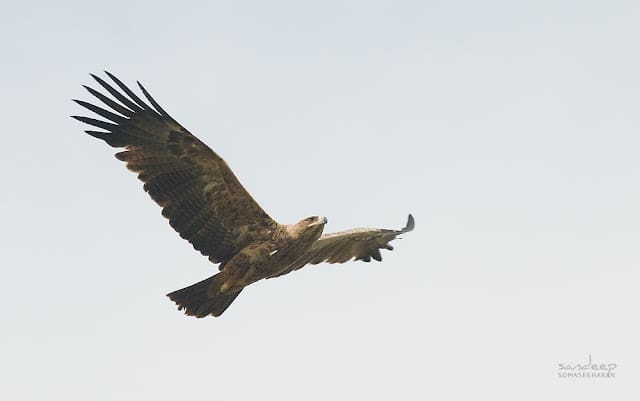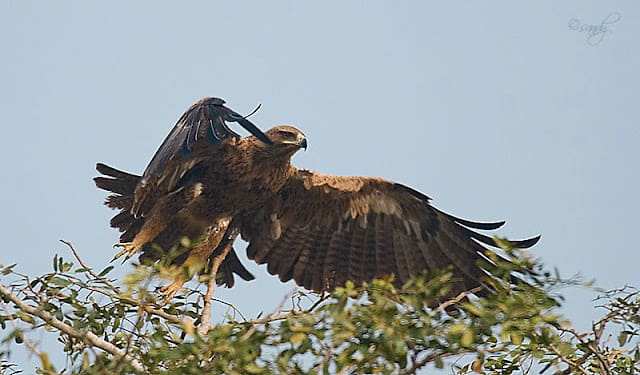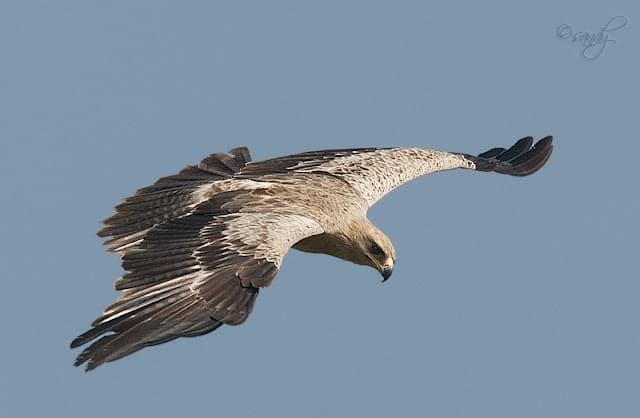The name has a definite ring, doesn’t it? So much that a friend, a newbie birder who had just come down to bird with me Mysore, went back and told his friends that he had a good sighting of a ‘Tommy Eagle’.

The Tawny Eagle (Aquila rapax) was the first species of eagle that I saw since I began birding. I remember my friend looking at my photo and saying, “It is a Black Kite.”
I was positive it wasn’t — the head was flat, the eyes fiercer, and the bird was definitely larger than a kite. The cere (the fleshy yellow skin around the beak) extended below the eye. I was proven right.
 |
| A dark morph adult lifts off |
Tawny eagles exhibit two morphs. The juveniles occur often in a pale morph, and are at times larger than the parents thanks to the healthy supply of food with which they are provided. In time, as the birds age, the plumage darkens. The non-migratory Tawny Eagle can be distinguished in the field from the wintering Steppe Eagle (Aquila nipalensis), with which it was once believed to be conspecific, by the cere which extends beyond the eye, and by the oval nostrils.
 |
| A juvenile, in the distinctive pale morph |
They nests, made of twigs, are built in tall trees. The bird generally lays two eggs. The mating display is fascinating — the courting birds clasp claws and tumble a long way down. Tawny Eagles are scrubland birds that scavenge on carrion as well as pick up live prey including birds, reptiles, insects, small mammals and poultry.
Text and photos by Sandeep Somasekharan
- Costa Rica Diaries – Parting Gifts - May 5, 2024
- Costa Rica Day 6 – Resplendent Quetzal: Part Bird, Part God and Full-Time Economy Driver - April 17, 2024
- Costa Rica Day 5 – Toucan Trees and Wild Dreams Coming True - March 22, 2024
